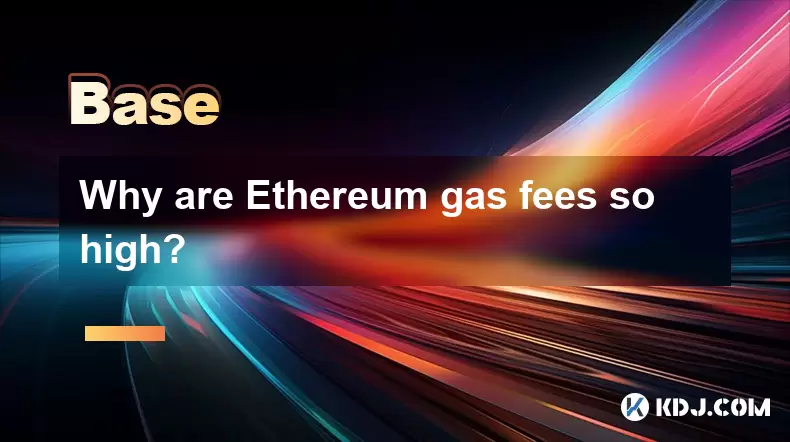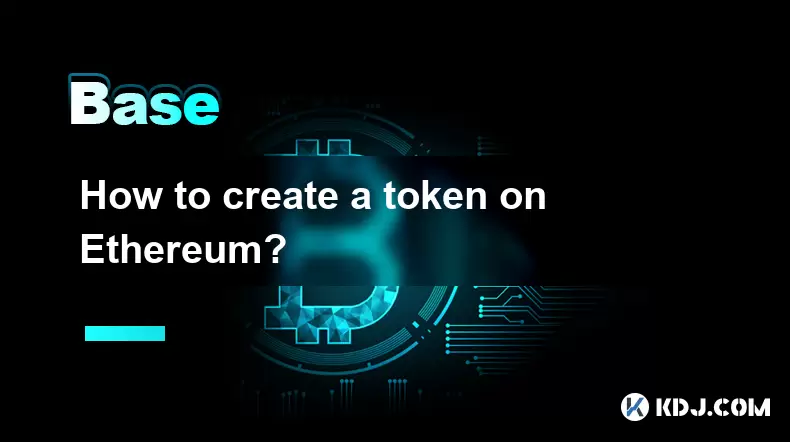-
 Bitcoin
Bitcoin $118400
0.39% -
 Ethereum
Ethereum $3814
2.17% -
 XRP
XRP $3.547
1.34% -
 Tether USDt
Tether USDt $1.000
0.00% -
 BNB
BNB $769.5
2.95% -
 Solana
Solana $191.7
6.36% -
 USDC
USDC $0.9999
0.01% -
 Dogecoin
Dogecoin $0.2722
7.75% -
 Cardano
Cardano $0.8995
5.59% -
 TRON
TRON $0.3158
-0.78% -
 Hyperliquid
Hyperliquid $47.37
4.46% -
 Stellar
Stellar $0.4848
3.54% -
 Sui
Sui $4.031
1.72% -
 Chainlink
Chainlink $20.11
3.94% -
 Hedera
Hedera $0.2832
3.16% -
 Avalanche
Avalanche $26.20
4.27% -
 Bitcoin Cash
Bitcoin Cash $530.5
0.67% -
 Shiba Inu
Shiba Inu $0.00001568
3.59% -
 Litecoin
Litecoin $118.4
1.42% -
 UNUS SED LEO
UNUS SED LEO $8.976
-0.23% -
 Toncoin
Toncoin $3.349
2.54% -
 Polkadot
Polkadot $4.590
2.54% -
 Uniswap
Uniswap $10.56
-0.59% -
 Ethena USDe
Ethena USDe $1.001
0.00% -
 Monero
Monero $327.7
0.39% -
 Pepe
Pepe $0.00001422
2.62% -
 Bitget Token
Bitget Token $4.973
-1.22% -
 Dai
Dai $1.000
0.02% -
 Aave
Aave $331.9
1.59% -
 Bittensor
Bittensor $429.6
-0.56%
Why are Ethereum gas fees so high?
Ethereum gas fees, paid in ETH, fluctuate based on network demand, transaction complexity, and user-set gas prices, often spiking during high congestion or DeFi/NFT activity.
Jul 20, 2025 at 10:00 pm

Understanding Ethereum Gas Fees
Ethereum gas fees are the costs users pay to execute transactions or smart contracts on the Ethereum blockchain. These fees are paid in Ether (ETH) and are calculated based on the computational power required to process the operation. The term "gas" refers to the unit that measures the amount of computational effort needed. The higher the complexity of the transaction, the more gas it requires, which directly affects the cost.
Factors That Influence Gas Prices
Gas fees are determined by two primary components: gas limit and gas price. The gas limit is the maximum amount of gas a user is willing to spend on a transaction, while the gas price is how much they're willing to pay per unit of gas, usually measured in gwei (a fraction of ETH). During periods of high network congestion, users may increase the gas price to prioritize their transactions.
- Network Congestion: When more users are transacting or interacting with decentralized applications (dApps), demand for block space increases.
- Smart Contract Complexity: Executing complex smart contracts or interacting with dApps can require more computational resources.
- Gas Auction System: Miners prioritize transactions with higher gas prices, creating a competitive environment during peak times.
The Role of Ethereum's Scalability Limitations
Ethereum currently processes around 15 to 45 transactions per second (TPS), which is relatively low compared to newer blockchain networks. This limited throughput leads to bottlenecks during high demand, causing gas prices to spike. Unlike blockchains with higher scalability, Ethereum cannot accommodate surges in traffic without increasing fees.
The block size and block time are also fixed, meaning only a limited number of transactions can be included in each block. As a result, when the network experiences high usage, users must bid higher gas prices to ensure their transactions are processed promptly.
Impact of Decentralized Finance (DeFi) and NFTs
The rise of DeFi platforms and NFT marketplaces built on Ethereum has significantly increased network activity. Users frequently interact with these platforms for swapping tokens, staking, lending, or minting NFTs, all of which require gas fees. Complex DeFi transactions, such as multi-hop trades or yield farming strategies, often consume more gas than simple transfers.
NFT minting and trading also contribute to high gas usage. During NFT drops or popular sales, thousands of users attempt to mint or purchase NFTs simultaneously, leading to spikes in gas prices. This demand-driven model pushes users to pay higher fees to secure their transactions in the next available block.
Comparison with Layer 2 Solutions and Competing Chains
To address high gas fees, many users and developers have turned to Layer 2 solutions like Optimism, Arbitrum, and zkSync. These networks operate on top of Ethereum and offer cheaper and faster transactions by batching multiple transactions off-chain before submitting them to the main Ethereum blockchain.
Other blockchains, such as Binance Smart Chain, Solana, and Avalanche, have also gained popularity due to their lower transaction fees and higher throughput. While these chains offer cost-effective alternatives, they often come with trade-offs in decentralization and security compared to Ethereum.
Strategies to Reduce Gas Fees on Ethereum
Users can adopt several strategies to minimize gas costs when interacting with the Ethereum network:
- Use Gas Tracking Tools: Platforms like Etherscan Gas Tracker or GasNow allow users to monitor current gas prices and choose optimal times for transactions.
- Adjust Gas Price Manually: Wallets like MetaMask let users customize gas fees instead of relying on default suggestions.
- Transact During Off-Peak Hours: Gas fees tend to be lower during weekends or late-night hours when network activity is reduced.
- Batch Transactions: Combining multiple actions into a single transaction can reduce overall gas consumption.
Frequently Asked Questions
Q: Can I send ETH without paying gas fees?
A: No, every transaction on the Ethereum blockchain requires gas fees to incentivize miners or validators to process and confirm the transaction.
Q: What happens if I set a very low gas price?
A: Your transaction may be delayed or stuck in the pending queue for an extended period as miners prioritize transactions with higher gas prices.
Q: Why do gas fees vary between wallets?
A: Different wallets may suggest varying gas prices based on their algorithms and real-time network data. Some wallets also offer optimization features to help users choose efficient gas rates.
Q: Are gas fees refundable if a transaction fails?
A: No, gas fees are not refundable even if a transaction fails because the network still consumes resources to process and validate the attempt.
Disclaimer:info@kdj.com
The information provided is not trading advice. kdj.com does not assume any responsibility for any investments made based on the information provided in this article. Cryptocurrencies are highly volatile and it is highly recommended that you invest with caution after thorough research!
If you believe that the content used on this website infringes your copyright, please contact us immediately (info@kdj.com) and we will delete it promptly.
- Binance, PEPE, and BONK: Meme Coins Mature, Shed 'Seed Tag' Amid Market Shifts
- 2025-07-21 22:30:13
- Toshi.bet: Leading the Crypto Casino Revolution in Poland 2025
- 2025-07-21 20:30:12
- Tether Gold (XAU₮) Expands: Mobee Indonesia & Tokenized Gold's Rising Tide
- 2025-07-21 20:50:12
- BlockDAG's Launch Access: No Vesting, Maximum Opportunity!
- 2025-07-21 21:30:12
- Altcoin Season Heats Up: Cardano Outperforms After Bitcoin Stabilizes
- 2025-07-21 20:50:12
- BlockchainFX: The 1000X Potential Crypto SHIB and DOGE Holders Are Eyeing
- 2025-07-21 21:30:12
Related knowledge

What is the difference between a sidechain and a Layer 2?
Jul 20,2025 at 11:35pm
Understanding the Concept of SidechainsA sidechain is a separate blockchain that runs parallel to the main blockchain, typically the mainnet of a cryp...

What is the Inter-Blockchain Communication Protocol (IBC)?
Jul 19,2025 at 10:43am
Understanding the Inter-Blockchain Communication Protocol (IBC)The Inter-Blockchain Communication Protocol (IBC) is a cross-chain communication protoc...

How does sharding improve scalability?
Jul 20,2025 at 01:21am
Understanding Sharding in BlockchainSharding is a database partitioning technique that is increasingly being adopted in blockchain technology to enhan...

What is the "crypto trilemma" of scalability, security, and decentralization?
Jul 19,2025 at 06:28pm
Understanding the Concept of the Crypto TrilemmaThe crypto trilemma refers to the challenge of simultaneously achieving scalability, security, and dec...

What is a cliff and vesting schedule in tokenomics?
Jul 20,2025 at 10:28am
What Does a Cliff Mean in Tokenomics?In tokenomics, a cliff refers to a specific period during which token holders are not allowed to access or transf...

How to create a token on Ethereum?
Jul 21,2025 at 02:07pm
Understanding the Basics of Ethereum TokensBefore diving into the process of creating a token on Ethereum, it's crucial to understand what Ethereum to...

What is the difference between a sidechain and a Layer 2?
Jul 20,2025 at 11:35pm
Understanding the Concept of SidechainsA sidechain is a separate blockchain that runs parallel to the main blockchain, typically the mainnet of a cryp...

What is the Inter-Blockchain Communication Protocol (IBC)?
Jul 19,2025 at 10:43am
Understanding the Inter-Blockchain Communication Protocol (IBC)The Inter-Blockchain Communication Protocol (IBC) is a cross-chain communication protoc...

How does sharding improve scalability?
Jul 20,2025 at 01:21am
Understanding Sharding in BlockchainSharding is a database partitioning technique that is increasingly being adopted in blockchain technology to enhan...

What is the "crypto trilemma" of scalability, security, and decentralization?
Jul 19,2025 at 06:28pm
Understanding the Concept of the Crypto TrilemmaThe crypto trilemma refers to the challenge of simultaneously achieving scalability, security, and dec...

What is a cliff and vesting schedule in tokenomics?
Jul 20,2025 at 10:28am
What Does a Cliff Mean in Tokenomics?In tokenomics, a cliff refers to a specific period during which token holders are not allowed to access or transf...

How to create a token on Ethereum?
Jul 21,2025 at 02:07pm
Understanding the Basics of Ethereum TokensBefore diving into the process of creating a token on Ethereum, it's crucial to understand what Ethereum to...
See all articles

























































































